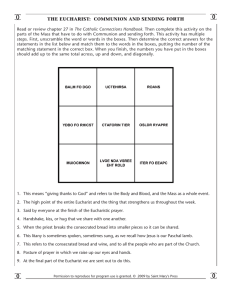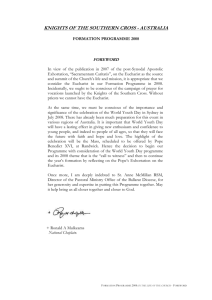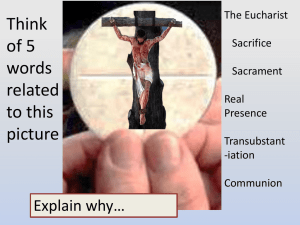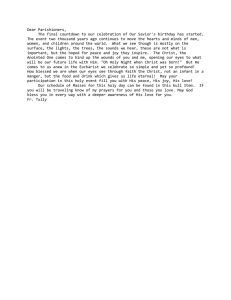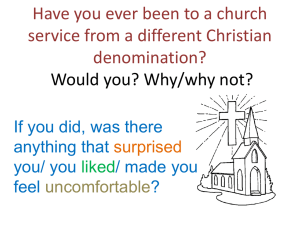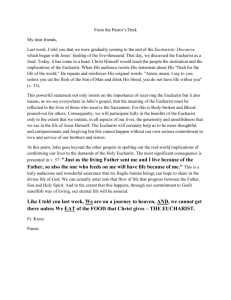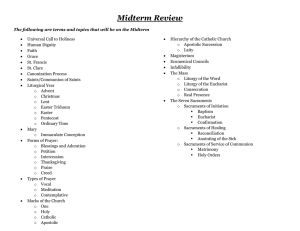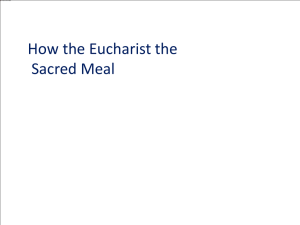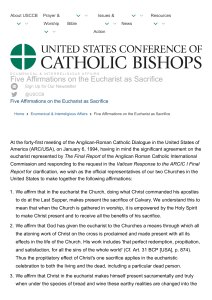Liturgical Celebration of the Eucharist: A Presentation
advertisement
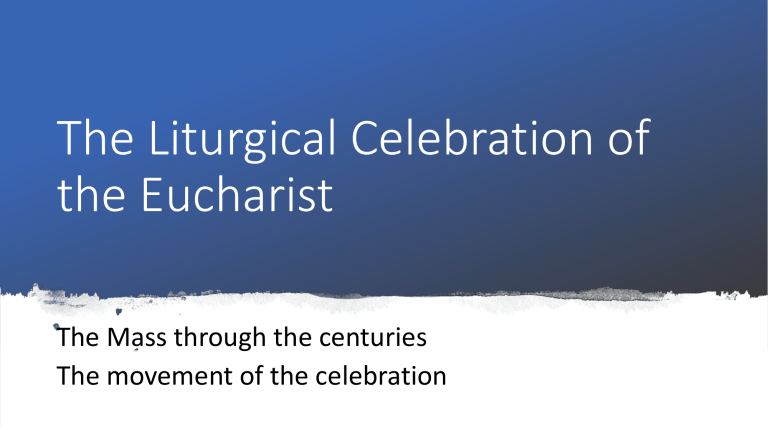
The Liturgical Celebration of the Eucharist The Mass through the centuries The movement of the celebration The Mass through the centuries The liturgy of the Eucharist The liturgy of the Eucharist Unfolds according to a fundamental structure preserved for centuries to today Displays two great parts that form a fundamental unity The liturgy of the Eucharist • The liturgy of the Word (gathering, readings, homily, general intercessions) • The liturgy of the Eucharist (presentation of bread and wine, the consecratory thanks giving, communion) The movement of the celebration ALL GATHER TOGETHER THE LITURGY OF THE WORD PRESENTATION OF THE OFFERINGS ANAPHORA EPICLESIS ANAMNESIS COMMUNION All gather together Christians come together in one place for the Eucharistic assembly At the head of the assembly is Christ Himself, the principal agent of the Eucharist The bishop or priest presides ‘in the person of Christ the head’ (in persona Christi capitis) The Liturgy of the Word Includes “the writings of the prophets” and “the memoirs of the apostles” Homily – an exhortation to accept this Word as the Word of God Intercessions follow the homily to put it into practice Presentation of the offerings (Offertory) • The bread and wine are offered by the priest in the name of Christ in which they will become Christ’s body and blood • It is the very action of Christ – taking the bread and a cup • Collection – sharing gifts to those in need Anaphora The prayer of thanksgiving and consecration The heart and summit of celebration The Church gives thanks to the Father, through Christ, in the Holy Spirit, for all his works: creation, redemption, and sanctification Epiclesis The Church asks the Father to send His Holy Spirit on the bread and wine By his power, they become the body and blood of Christ Those who take part in the Eucharist may be one body and one spirit Anamnesis • The Church calls to mind the Passion, Resurrection, and glorious return of Christ • The Church presents to the Father, the offering of His Son which reconciles us with Him • In intercessions, the Church indicates that the Eucharist is celebrated in communion with the whole Church in heaven and on earth Communion • Preceded by the Lord’s Prayer and the breaking of the bread • The faithful receive “the bread of heaven” and “the cup of salvation”, the body and blood of Christ who offered Himself “for the life of the world” “Because this bread and wine have been made Eucharist, we call this food Eucharist, and no one may take part in it unless he believes that what we teach is true, has received baptism for the forgiveness of sins and new birth and lives in keeping with what Christ taught.” Thank you! “The grace of the Lord Jesus be with all. Amen.” (Revelations 22:21)

